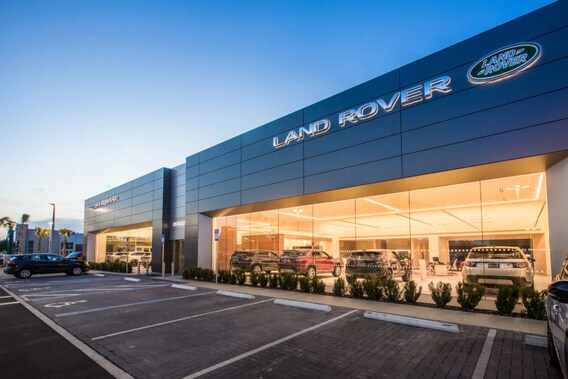Navigate stylish: Discover Deluxe at Our Land Rover Dealer Showroom
Navigate stylish: Discover Deluxe at Our Land Rover Dealer Showroom
Blog Article
The Ins and Outs of Cars and truck Leasing: A Comprehensive Guide on Exactly How It Functions
From comprehending lease terms to computing settlements and exploring end-of-lease options, there are numerous elements to take into consideration when considering this economic dedication. As consumers significantly decide for leasing over traditional automobile ownership, it becomes crucial to decipher the subtleties of this procedure to make educated choices.
Benefits of Vehicle Leasing
One significant benefit is the reduced month-to-month payments connected with leasing contrasted to purchasing a car. Leasing enables individuals to drive a newer auto with reduced ahead of time costs and reduced month-to-month payments considering that they are just funding the vehicle's depreciation during the lease term, rather than the entire purchase price.
Since leased cars are commonly under the supplier's warranty throughout the lease term, lessees can prevent the monetary concern of major fixings. Leasing may offer tax benefits for company proprietors that make use of the car for company functions, as lease payments can often be subtracted as an organization expenditure.
Comprehending Lease Terms
Considering the economic advantages of cars and truck leasing, it is vital to grasp the details of lease terms to make informed choices concerning this automobile funding alternative. Lease terms refer to the details conditions outlined in the leasing contract in between the lessee (the person leasing the automobile) and the lessor (the renting business) These terms commonly consist of the lease period, month-to-month repayment amount, gas mileage restrictions, damage standards, and any potential costs or penalties.
One vital facet of lease terms is the lease duration, which is the size of time the lessee accepts lease the vehicle. Lease periods typically range from 24 to 36 months, yet can vary. Understanding the lease duration is vital, as it influences month-to-month settlements and general expenses. Furthermore, gas mileage restrictions define the maximum variety of miles the lessee can drive the vehicle yearly. Discussing the mileage restriction can cause excess gas mileage charges at the end of the lease. It is important to thoroughly evaluate and understand all lease terms before authorizing the contract to avoid any surprises or misconceptions throughout the leasing period.

Determining Lease Settlements
Checking out the process of calculating lease payments sheds light on necessary economic considerations for people involving in car leasing arrangements. Lease settlements are generally established by taking into consideration click this site factors such as the automobile's depreciation, the agreed-upon lease term, the cash factor (passion rate), and any kind of additional costs. To calculate lease repayments, one can use the complying with formula: Month-to-month Lease Repayment = (Devaluation + Finance Fee) ÷ Number of Months in the Lease Term.
Upkeep and Insurance Considerations
Comprehending the upkeep and insurance needs linked with automobile leasing is critical for lessees to make certain the correct care and defense of the vehicle throughout the lease term. Maintenance duties vary among leasing contracts, but lessees are normally anticipated to maintain the producer's advised maintenance schedule.
Concerning insurance policy, all leased vehicles have to have thorough and crash coverage with obligation limitations that fulfill or surpass the leasing company's needs. It's crucial to carefully examine the insurance coverage requirements laid out in the lease contract and guarantee that the insurance coverage is maintained throughout the lease term.
End-of-Lease Options and Refine
As completion of the lease term strategies, lessees exist with numerous options and a specified process for returning the car or choosing to seek a different setup. One typical alternative is to just return the automobile to the owner at the end of the lease term. Lessees are generally accountable for any excess mileage fees, wear and tear costs, and any various other outstanding payments as outlined in the lease contract.
Alternatively, lessees may have the option to purchase the car at the end of the lease term. The acquisition cost is usually determined in the lease arrangement and might include a recurring worth that was developed at the beginning of the lease.

One more option for lessees is to trade in the leased vehicle for a brand-new lease or purchase - New Land Rover Dealer. This can be a hassle-free alternative for those that favor to continually drive a new automobile without the hassle of marketing or returning the current leased car
Ultimately, recognizing the end-of-lease options and procedure is critical for lessees to make informed decisions that line up with their preferences and demands.
Conclusion
Finally, car leasing provides advantages such as lower monthly repayments and the ability to drive a new lorry every couple of years. Understanding lease terms, determining repayments, and thinking about maintenance look at more info and insurance are essential aspects of the leasing procedure. In addition, recognizing the end-of-lease choices and procedure is necessary for a smooth transition at the end of the lease term. On the whole, car leasing can be a viable option for those looking for versatility and lower expenses in lorry ownership.
Given that leased cars are commonly under the producer's guarantee during the lease term, lessees can stay clear of the economic worry of major repairs. Lease terms refer to the specific problems outlined in the leasing agreement between the lessee (the individual leasing the cars and truck) and the owner (the renting firm)One important facet of lease terms is the lease duration, which is the length of time the lessee agrees to rent the vehicle. Lease payments are typically determined by taking into consideration aspects such as the vehicle's depreciation, the agreed-upon lease term, the money aspect (rate of interest rate), and any type of extra charges. To determine lease repayments, one can more info here utilize the adhering to formula: Monthly Lease Repayment = (Devaluation + Finance Fee) ÷ Number of Months in the Lease Term.
Report this page